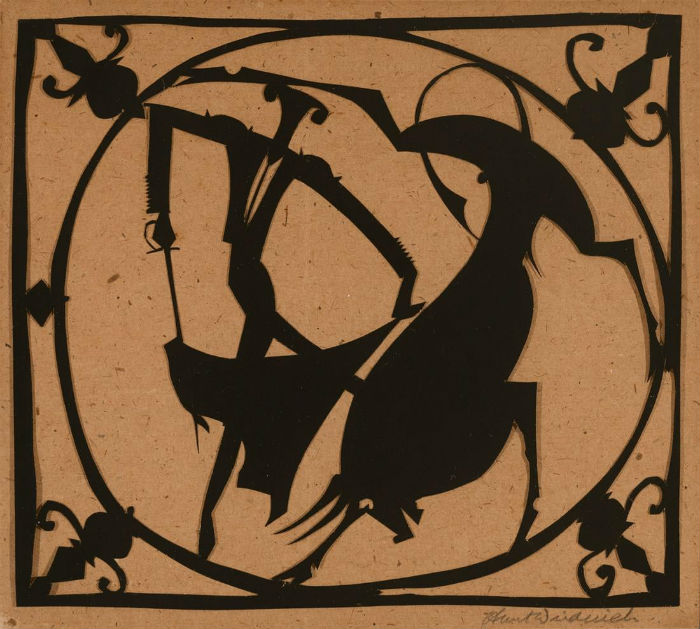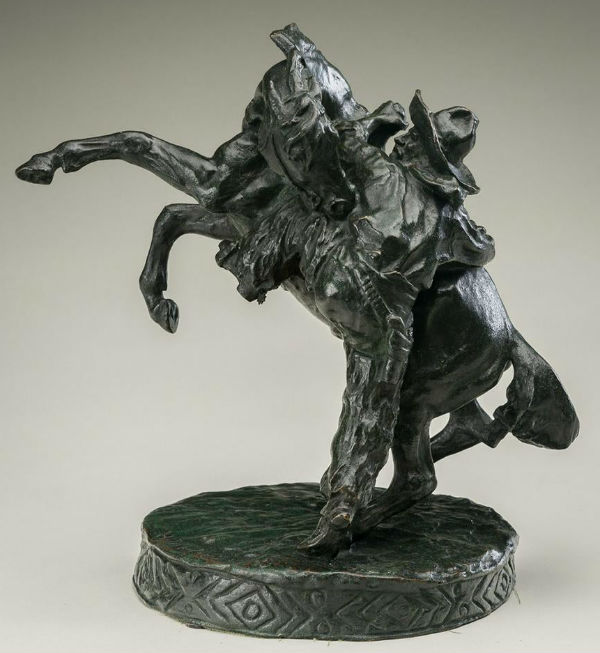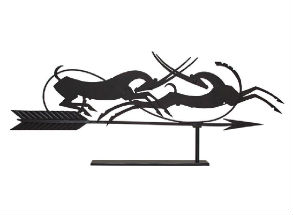
NEW YORK – William Hunt Diederich (1884-1953) grew up in Austria-Hungary, surrounded by horses, deer and dogs on his family’s estate. Early on, he practiced scherenschnitte, the art of paper cutting and making paper silhouettes, with animals as a favorite subject. He moved to Boston at age 16 to study art and live with his grandfather, the artist William Morris Hunt, who was well known in the Barbizon school of painting. His drawings, bronzes and wrought iron designs in the Art Deco style, from fire screens to weathervanes, reflect his abiding love for animals. He cultivated this love not only during his childhood but also in the time he spent in the American West pursuing a cowboy lifestyle. His elegant, elongated and dynamic compositions of animals on the move have long attracted appreciative audiences.
“I love animals first, last and always,” Diederich said. “Animals seemed to me truly plastic. They possess such supple, unspoiled rhythms.”
The Art Institute of Chicago, one of many public institutions which has the artist’s work in its permanent collection, has this wolf and goat fire screen made by the artist, circa 1917. “William Hunt Diedrich consistently sought to capture dynamic imagery in his works, most often through compositions featuring animals engaged in combat or play. This fire screen represents one of the artist’s most powerful realizations of this goal,” according to the museum’s online entry. The museum notes the artist’s effective use of jagged edges on the tails of the animals that combine form with function. The edges serve as tabs that affix the animal silhouettes onto the screen yet their jaggedness adds dramatic effect as the animals are enmeshed in a fight for life. The undulating look of the screen adds a sense of fluidity and movement.

While Diederich is perhaps best known as a sculptor for his wrought iron work, he was versatile and also worked in bronze. A bronze of greyhounds owned by the Crystal Bridges Museum of American Art in Bentonville, Ark, evinces his talent. In this work and others, the contrast is quite striking between the heavy material used and the design that is seemingly light and bursting with energy. “The elongation of forms creates an electrifying sense of dynamism and fluidity, exhibiting both elegance and speed,” according to Bernard Goldberg Fine Arts LLC. Diederich also excelled at using negative space to create thoughtful designs.

Chicago-based auctioneer Wright, which specializes in 20th century design, notes that Diederich’s metal sculptures are renowned for their streamlined yet sensitive aesthetic. “Often depicting zoological forms in play or combat, his works, both two- and three-dimensional, feature his signature sense drama and are imbued with an exhilarating narrative,” according to the auction company’s website.
Combining in his work the folk art traditions he learned in Europe with his academic training in Boston and at the Pennsylvania Academy of Fine Art, the artist also subscribed to the Arts and Crafts movement philosophy that objects be both useful and beautiful. At PAFA, he met fellow sculptor Paul Manship and a kinship was born between the two artists. Both created many works inspired by animals that reflected their deep understanding of anatomy but more importantly, were noted for their vitality.

Diederich’s years in Paris had exposed him to Modernism and he began creating sleekly styled designs, effortlessly transforming rigid wrought iron into highly evocative and energetic shapes. He was a fixture of the arts scene there and in 1913 he exhibited Greyhounds at the Salon d’Automne, which was well received.
After World War I broke out, he relocated to New York and began one of the most illustrious periods of his career. He had his first art exhibition there in 1920 at the Kingore Gallery, which consisted of more than 80 artworks, most with animal and sporting subjects. Working in New York in the 1930s, he created many celebrated public art installations, including a series of weathervanes for the Central Park Zoo in 1934. He also quickly attracted the attention of top collectors like Gertrude Vanderbilt Whitney. Six of his artworks are today owned by the Whitney Museum of American Art. While Diederich is best known for his dogs and horses, he created a veritable zoo of animal subjects in his artworks from deer and stags to goats, polo ponies and roosters.

Perhaps owing to his prickly personality and reputation for being difficult, he has not been given his proper due in art history and his omission in Sculpture in America is striking. Museums have been remiss is not presenting his work in recent decades, though a handful of galleries find him a perennial favorite. The upshot is collectors are still able to find good examples of his work with the market being quite accessible. With his distinctive style, Diederich’s highly stylized animals are dynamic and striking, whether ably captured on paper by this skilled draftsman or in metal as in his prized sculptures and decorative iron pieces.



